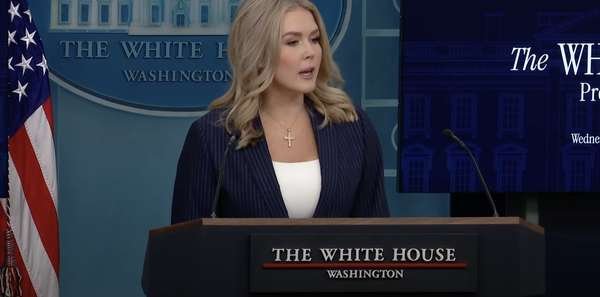A major news outlet just regained White House access—what it could mean for press freedom
- Replies 0
In a development stirring interest across political and media circles alike, a prominent news organization has regained its ability to attend presidential events—due to a recent federal court ruling.
The case, centered on access to official briefings and coverage opportunities, brings into focus a broader discussion about journalistic freedom, institutional discretion, and the evolving boundaries of press engagement.
The Conflict Over Access
The matter arose after the outlet was barred from participating in specific White House events, including coverage from the Oval Office and aboard Air Force One.
The restriction followed the outlet’s editorial decision not to adopt updated terminology regarding a geographic body of water, as referenced in a presidential executive order.
That choice reportedly led to its exclusion from select media pool coverage.
In response, the organization filed a lawsuit, asserting its right to report independently and without retaliation.

On April 1, US District Judge Trevor N. McFadden issued a preliminary injunction affirming that the government cannot limit press access based on a journalist’s viewpoint.
“The Constitution requires no less,” McFadden wrote in his opinion, noting that when access is granted to some members of the press, it must be made available fairly to others as well.
His ruling did not guarantee permanent access for any particular outlet but did underscore that viewpoint-based exclusions cannot be justified.
Also read: ABC's million-dollar settlement with Trump sparks debate—is democracy under threat?
Ongoing Tension Between Institutions and Media
The ruling comes at a time when the dynamic between government entities and media institutions continues to evolve.
In recent months, the administration has made a number of moves that have impacted how certain outlets can engage, from limiting who joins media pools to adjusting seating arrangements during briefings.
While representatives for the White House have not issued a formal comment on the decision, the ruling is seen as significant for maintaining press access in government spaces considered open to media.
Impact and Implications
Although the decision does not mandate automatic inclusion in all events, it establishes that the government must apply consistent criteria when granting access.
Media organizations cannot be penalized solely based on editorial choices or the language they use in coverage.
In practical terms, the exclusion had impacted the news organization’s ability to deliver timely reporting and visual content, particularly for high-profile events.
Also read: Outrage in the streets: This in-depth look at protests against Trump policies explain why
Testimony during the legal proceedings revealed that the outlet lost a major advertising contract due to the perception of reduced access.
Judge McFadden emphasized that while officials are within their rights to choose whom they grant interviews to—or whose questions they answer—they cannot bar certain reporters from events open to peers in the same role.
"Under the First Amendment, if the Government opens its doors to some journalists—be it to the Oval Office, the East Room, or elsewhere—it cannot then shut those doors to other journalists because of their viewpoints,” the judge wrote.
Looking Ahead
This decision has been viewed by many in the journalism community as a reminder of longstanding constitutional protections.
At the same time, it signals to both media outlets and institutions that policies surrounding access must be applied impartially.
While the administration has indicated it may respond or appeal, the decision stands for now—and with it, the door reopens for a restored presence at future briefings and events.
Read next: Trump teases the possibility of another political decision–"I'm not done yet."
 What are your thoughts on this case? Has your perception of press freedom changed in recent years? Share your insights with the community below.
What are your thoughts on this case? Has your perception of press freedom changed in recent years? Share your insights with the community below.
The case, centered on access to official briefings and coverage opportunities, brings into focus a broader discussion about journalistic freedom, institutional discretion, and the evolving boundaries of press engagement.
The Conflict Over Access
The matter arose after the outlet was barred from participating in specific White House events, including coverage from the Oval Office and aboard Air Force One.
The restriction followed the outlet’s editorial decision not to adopt updated terminology regarding a geographic body of water, as referenced in a presidential executive order.
That choice reportedly led to its exclusion from select media pool coverage.
In response, the organization filed a lawsuit, asserting its right to report independently and without retaliation.

The Associated Press organization filed a lawsuit, asserting its right to report independently and without retaliation. Image source: Associated Press / YouTube
On April 1, US District Judge Trevor N. McFadden issued a preliminary injunction affirming that the government cannot limit press access based on a journalist’s viewpoint.
“The Constitution requires no less,” McFadden wrote in his opinion, noting that when access is granted to some members of the press, it must be made available fairly to others as well.
His ruling did not guarantee permanent access for any particular outlet but did underscore that viewpoint-based exclusions cannot be justified.
Also read: ABC's million-dollar settlement with Trump sparks debate—is democracy under threat?
Ongoing Tension Between Institutions and Media
The ruling comes at a time when the dynamic between government entities and media institutions continues to evolve.
In recent months, the administration has made a number of moves that have impacted how certain outlets can engage, from limiting who joins media pools to adjusting seating arrangements during briefings.
While representatives for the White House have not issued a formal comment on the decision, the ruling is seen as significant for maintaining press access in government spaces considered open to media.
Impact and Implications
Although the decision does not mandate automatic inclusion in all events, it establishes that the government must apply consistent criteria when granting access.
Media organizations cannot be penalized solely based on editorial choices or the language they use in coverage.
In practical terms, the exclusion had impacted the news organization’s ability to deliver timely reporting and visual content, particularly for high-profile events.
Also read: Outrage in the streets: This in-depth look at protests against Trump policies explain why
Testimony during the legal proceedings revealed that the outlet lost a major advertising contract due to the perception of reduced access.
Judge McFadden emphasized that while officials are within their rights to choose whom they grant interviews to—or whose questions they answer—they cannot bar certain reporters from events open to peers in the same role.
"Under the First Amendment, if the Government opens its doors to some journalists—be it to the Oval Office, the East Room, or elsewhere—it cannot then shut those doors to other journalists because of their viewpoints,” the judge wrote.
Looking Ahead
This decision has been viewed by many in the journalism community as a reminder of longstanding constitutional protections.
At the same time, it signals to both media outlets and institutions that policies surrounding access must be applied impartially.
While the administration has indicated it may respond or appeal, the decision stands for now—and with it, the door reopens for a restored presence at future briefings and events.
Read next: Trump teases the possibility of another political decision–"I'm not done yet."
Key Takeaways
- A federal judge has ordered the White House to restore The Associated Press' full access to cover presidential events, citing First Amendment grounds.
- The ruling is a preliminary injunction and reaffirms that the government cannot retaliate against journalists for the content of their speech.
- Despite the ruling, an AP reporter and photographer were initially turned away from joining a White House press pool event.
- The AP has faced issues with covering the president and presidential events due to decisions made by the current administration.






